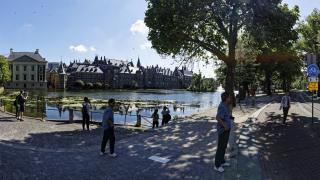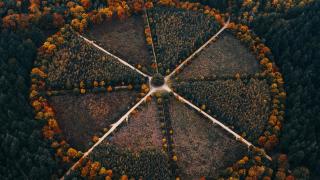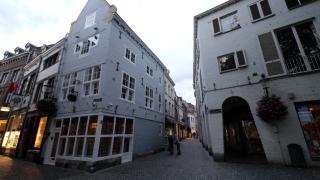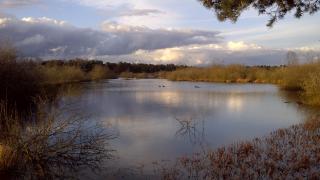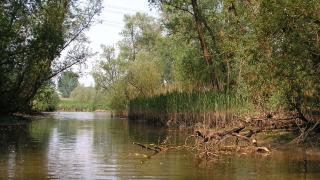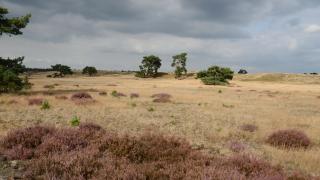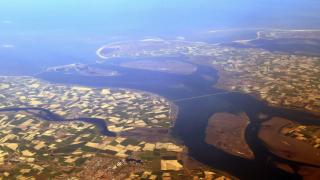Why Camp in the Netherlands?
Camping in the Netherlands means access to diverse landscapes. You find campsites in coastal dunes, dense forests, and beside lakes like IJsselmeer. Many sites are close to historic towns, such as Delft or Haarlem. Cycling is central; most campsites connect directly to the Dutch fietspad (cycle path) network. Distances between sites are short—often 10-30 km. Dutch camping culture values gezelligheid (coziness) and community. Families and friends gather at communal areas, especially during summer. Local traditions include morning bread delivery to tents and shared coffee corners. Camping is popular with Dutch families and travelers from Germany and Belgium. Most campsites open from April to October. Peak season is July and August, but May and September offer quieter stays. Prices range from €15-€35 per night for a tent pitch, including facilities. Many sites offer rental bikes and canoe hire. Wild camping is not allowed, but natuurkampeerterreinen (nature campsites) offer basic, eco-friendly stays. The atmosphere is relaxed, with a focus on nature and local culture.
Choosing Your Campsite
Campsites in the Netherlands offer several options:
- Family holiday parks: Large sites with pools, restaurants, and kids’ clubs. Common near the Veluwe and Zeeland coast.
- Natuurkampeerterreinen: Nature campsites. Over 140 locations. Membership card required. Quiet, basic facilities. Often in forests or near lakes.
- Boerencampings: Farm camping. Small, rural sites on working Dutch farms. Usually 10-25 pitches. Popular in Friesland and Limburg.
- Glamping: Luxury tents or cabins. Available at select parks and coastal sites.
- Wild camping: Not permitted. Fines apply. Only legal at designated ‘paalkamperen’ sites, but most are now closed.
Popular camping regions:
- Veluwe: Forests, heath, wildlife.
- Frisian Lakes: Water sports, rural views.
- Zeeland coast: Beaches, dunes.
- Limburg: Rolling hills, near Belgium and Germany.
Typical amenities:
- Showers and toilets (almost universal)
- Electricity at most pitches
- Bike rentals on-site
- Playground and Wi-Fi common at family parks
Booking tips:
- High season: July-August. Book 2-4 months ahead.
- Use Dutch platforms: ANWB, Natuurkampeerterreinen, SVR.
- Some small sites accept walk-ins, but not in summer.
Pricing:
- Standard pitch: €18-€35/night (2 people, electricity, showers included)
- Glamping: €60-€120/night
- Farm camping: €15-€25/night
- Tourist tax: €1-€2.50 per person/night
Getting There and Around
Most Dutch campsites are accessible by public transport. NS trains connect major cities to towns near campsites. Local buses, such as Arriva or Connexxion, often stop within 1-2 km of rural sites. Cycling is popular; many campsites have direct access to the national fietsknooppunten (cycle route network). Bike rentals cost €10-€15 per day. Driving is straightforward; roads are well-maintained. Caravans and campervans must use designated pitches. Wild camping is illegal. Overnight parking outside campsites is not allowed except at official camperplaatsen. These service points cost €10-€20 per night. Parking in cities is expensive—expect €3-€7 per hour. Plan routes using the ANWB app or Fietsersbond Routeplanner for bikes. Many campsites post GPS coordinates on their websites. Ferries operate to islands like Texel; book in advance for vehicles. Always check local traffic rules—speed limits are strictly enforced. Fuel stations are frequent, but LPG is less common.
Packing for Dutch Weather
Dutch weather is unpredictable, even in summer. Rain and wind are common from April to September. Nights can drop below 10°C, especially in May and September.
- Bring a waterproof tent. Dutch rain showers are sudden and heavy. Tents with a 3000 mm hydrostatic head are standard.
- Pack warm layers. Fleece jackets and thermal shirts are needed for cool evenings.
- Rainwear is essential. Locals use ponchos or cycling rain suits. Expect to pay €20-€40 at HEMA or Decathlon.
- Sturdy, waterproof footwear is necessary. Campsites near the Wadden Sea and Veluwe can be muddy.
- Forgotten gear? Most towns have an outdoor shop (e.g., Bever, ANWB). Supermarkets like Albert Heijn sell basic supplies.
- Cooking: Most campsites allow gas stoves. Butane cartridges cost €5-€8 at Kampeerwinkel or Blokker. Many sites offer shared kitchens. Local markets (e.g., Utrecht, Alkmaar) sell fresh bread and cheese.
- Useful extras:
- Insect repellent for lakeside sites
- Bike locks (fiets slot) for securing bikes at camp
- EU power adapters (Type C/F) for campsite hookups
Prepare for quick weather changes. Dutch campers always check Buienradar for rain forecasts.
Camping Etiquette and Regulations
Quiet hours are enforced at most Dutch campsites, usually from 22:00 to 07:00. Loud music is not allowed.
Wild camping (wildkamperen) is illegal everywhere in the Netherlands. Fines can reach €140 per person. Use official campsites or designated 'Paalkamperen' sites. These are limited and often require advance booking.
Check-in at campsites is typically between 14:00 and 18:00. Check-out is before 11:00. Always show your ID or passport at reception.
Waste separation is required. Use bins marked for plastic (plastic), paper (papier), and residual waste (restafval). Glass (glas) bins are common. Never leave rubbish outside bins.
Campfires are forbidden unless a site provides a designated area.
Respect local flora and fauna. Picking flowers or disturbing wildlife is prohibited in Dutch nature reserves.
Greet fellow campers with a simple "Hallo". Keep pitches tidy and avoid blocking paths. Dutch campers value privacy and order.
Quick-Start Checklist
- Book Dutch campsites early, especially in July-August. Use platforms like ANWB Camping or Natuurkampeerterreinen.
- Bring a valid ID or passport. Most campsites require registration at check-in.
- Carry a European plug adapter (Type C or F) for campsite power points.
- Pack a rainproof tent and warm sleeping bag. Dutch nights can be cold, even in summer.
- Bring a fiets (bicycle) or rent one locally. Many campsites have direct cycle path access.
- Check OV-chipkaart balance for public transport to rural sites.
- Respect Dutch recycling rules. Separate waste at campsite bins.
- Download the 'Kamperen' app for campsite maps and local rules.
- Emergency? Call 112. Local weather: check KNMI.nl for updates.

